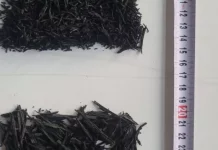Beijing: Head of Huawei’s consumer business Richard Yu announced the Huawei Mate 40 series via what appeared to be an online event.
The series is packed with the company’s latest Kirin 9000 chip, which Yu claims has 30 percent more transistors than the A14 chip in Apple’s new iPhone 12 series.
Yu said it’s “the most sophisticated 5G SoC” (system on a chip) in the world.
SoCs integrate all necessary chips in a gadget into a single chip to boost performance and save battery power. The Kirin 9000 also has a 5G modem built in. What’s more, the graphics part of the chip can run 52 percent faster than the one in Qualcomm’s Snapdragon 865 Plus, a rival chip that powers lots of new smartphones across the world, Yu said in the Mate 40 release video. With such a fast chip, Huawei promised the Mate 40 smartphones will only lose 2.5 percent of performance after three years of use. The image processing part of the chip also enabled Mate 40 to record slow-motion video at 240 frames per second, a feature that caused overheating in most previous smartphones. The new product addressed some problems in the old model that drew wide criticisms from gadget fans. The new model fixed a much-lamented problem that would cause people positioned on the edge of the frame to become distorted in wide-angle photographs.
The company said it has solved the problem with the “world’s first free-form lens” that can fix the distortion and make sure everybody looks normal in group photos.
Huawei replaced the physical volume buttons with a touchscreen-based solution for the curved screen on Mate 30 Pro, which didn’t impress many users and made it harder to adjust the volume. Perhaps realizing that it was not a good idea, the company has brought the physical buttons back.
Also, for the few people who still prefer the touch solution, the virtual buttons are still there. Both ways will work. With the previous Mate 30 series, users could swipe up and down with hover gestures so that they don’t need to touch the phone when, say, cooking.
But the gestures were not very responsive, and users could not swipe left or right. Also, there was no way to press buttons on the screen. The Mate 40 series provides both functions.
–The Daily Mail-CGTN exchange item






